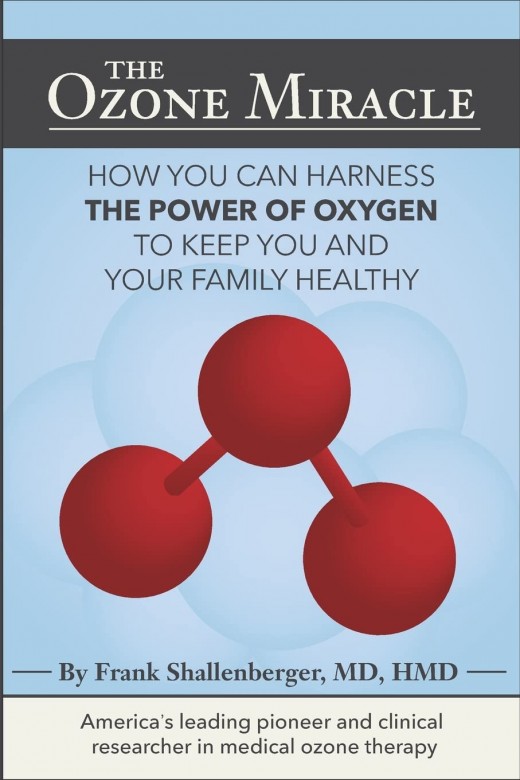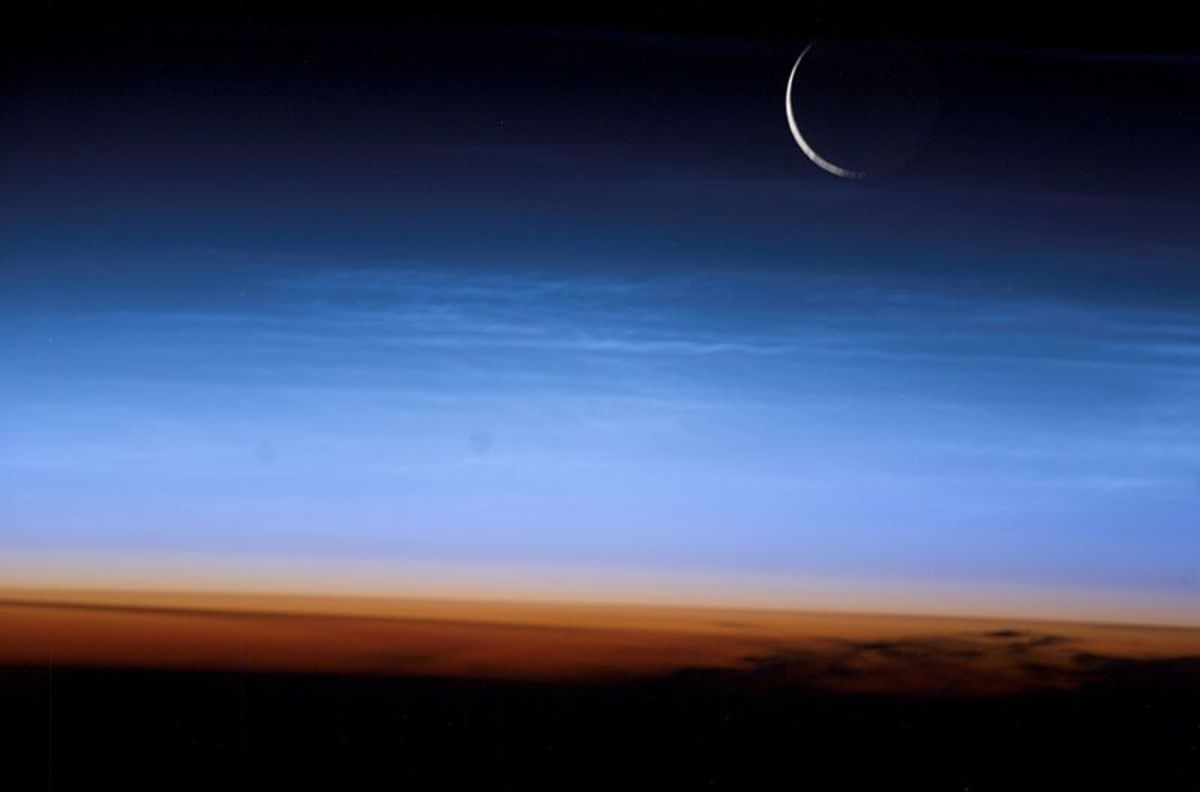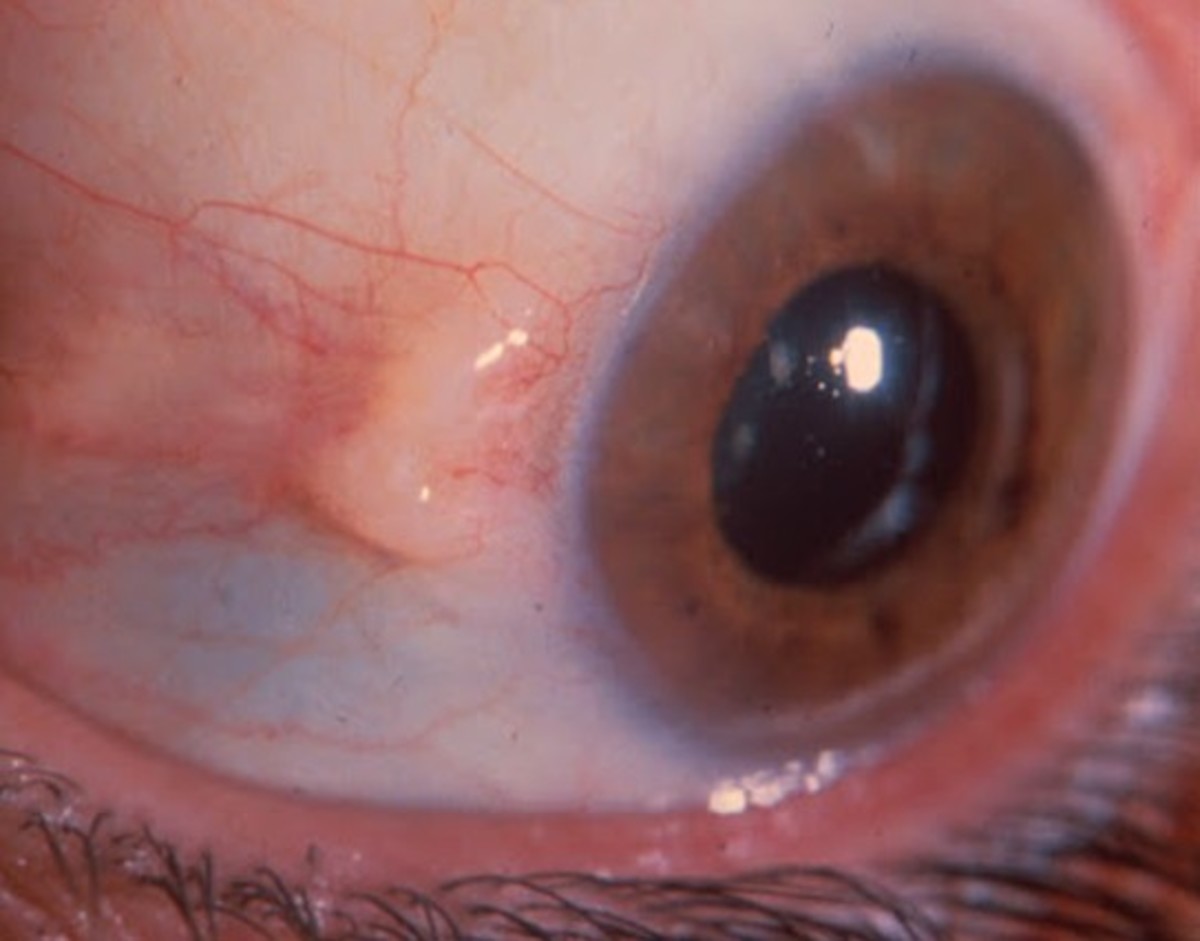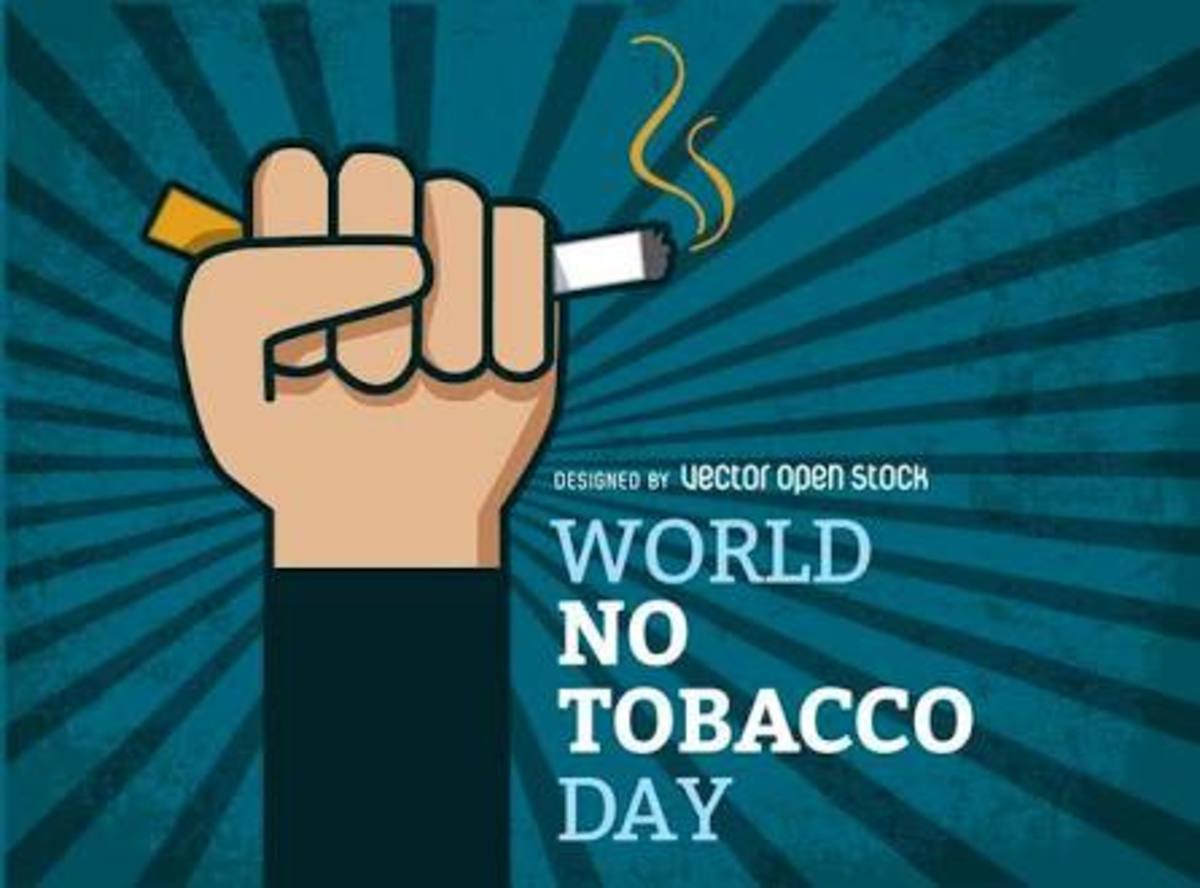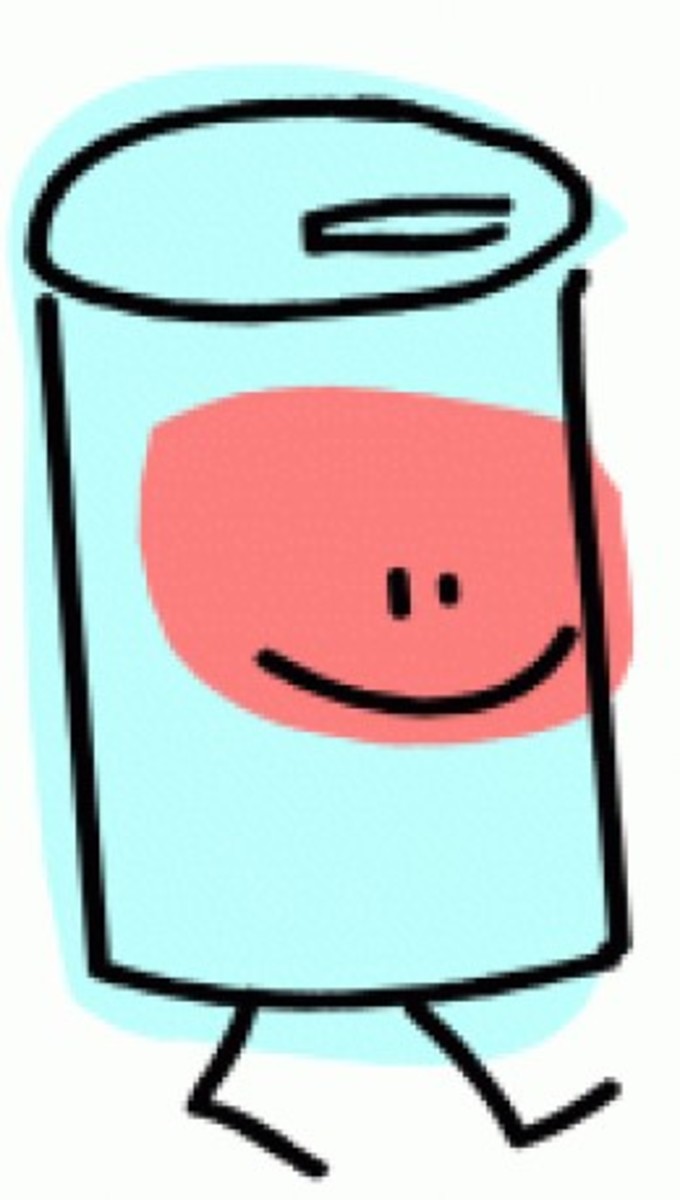The Ozone Depletion Phenomenon
SOS: Save our Sky. Protect the Ozone Layer.
September 16 is World Ozone Day (International Day for the Preservation of the Ozone Layer)
"In 1994, the United Nations General Assembly voted to designate September 16 as "World Ozone Day", to commemorate the signing of the Montreal Protocol on that date in 1987."
Montreal Protocol is an international treaty designed to protect the ozone layer. It decreases or phased out the production of numerous chemicals and substances believed to be causing ozone depletion.
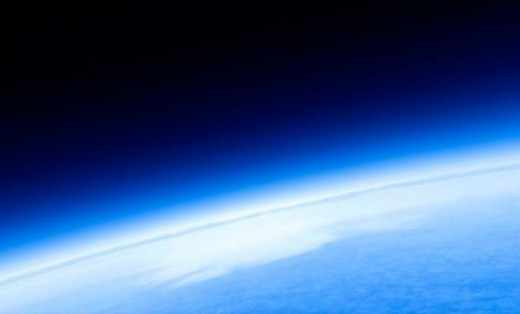
The depletion of the Ozone layer on our stratosphere is one of the most complex and serious environmental issue the planet is facing today. Over the past years, we saw evidence of human activities that affects the Ozone layer and this has been building up, continuing to grow every day.
Damaging the Ozone layer put the world at an increasingly greater risk. Everyone should be responsible in using products that contributes to the negative effect on our nature.
What is Ozone Layer?
Ozone Layer is the layer on the Earth's stratosphere (the highest region contains 90% of ozone) that is responsible in absorbing and protecting the Earth from the ultraviolet rays coming from the sun.
The Ozone is a bluish gas formed by three atoms of oxygen - the type of oxygen that we, humans breathe. It has three atoms instead of two (O2). In presence of halogens, the O3 gets converted to O2.
Ultraviolet rays are invisible rays emitted as energy by the sun and composed of three wavelengths: UVA, UVB and UVC. The Ozone layer is very important to the life on Earth. It absorbs the ultraviolet light rays sent by the sun at high altitude, therefore preventing this harmful radiation from reaching the surface. This ultraviolet radiation is very destructive to all living things; it can cause increased risk of cancers and cataracts to humans.
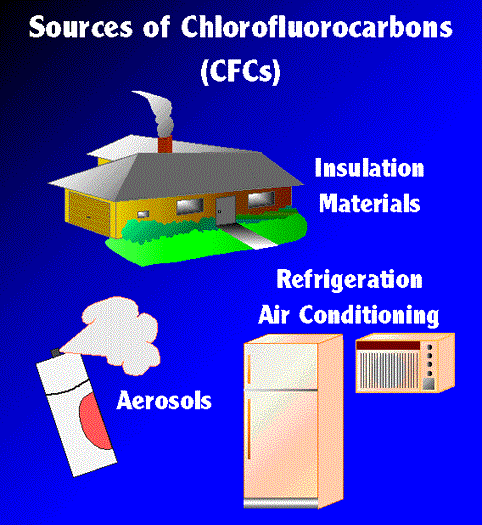
Causes of Ozone Depletion
The main cause of this depletion is the release or emission of CFCs or chlorofluorocarbons into the Earth's atmosphere. A chlorofluorocarbon is a man-made organic compound that contains Carbon, Hydrogen, Chlorine, and Fluorine. This chemical is used as refrigerants, aerosol propellants, in manufacturing of plastic foams and also as cleaning solvents.
These harmful gasses do not simply break down and are not washed up by rains nor destroyed in reactions with other chemicals. They remained on the lower atmosphere from 20 to 120 years.
Since these gasses are relatively stable, they are eventually ended on the stratosphere and will be broken down by ultraviolet rays from the sun, thus releasing Chlorine, which then actively contributing to the damage of the Ozone layer.
CFC molecules end up in the stratosphere. The chlorine atom that was removed from the CFC can attract one of the three oxygen atoms in the ozone, therefore when this process continually repeat, one single chlorine atom can destroy over 100,000 molecules of ozone.
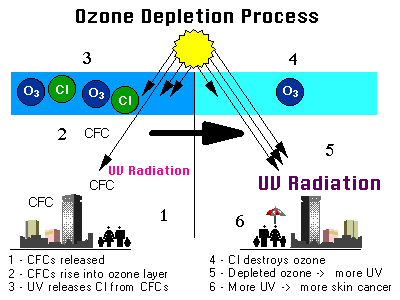
Effects of Ozone Depletion
The thinning of our ozone layer has great impacts on all living creatures in the planet. Every time, a small ozone layer is lost, more ultraviolet rays can reach the Earth's surface, harming the life cycles on the ecosystems.
Effects to human beings exposed on the harmful rays:
- Skin cancers such as malignant melanoma
- Malaria and other infectious disease
- Cortical Cataracts (clouding of the lens), blindness and other eye diseases
- Sunburns and premature aging of skin
- Weakening of the immune system

Effects on the Environment:
- It will disrupt the food chain and the life cycle of plants
- Microscopic organisms may not be able to survive (such as planktons, which are important component of marine food chain, thus breaking the flow of marine food chain)
- It contributes to the faster rate of global warming and climate change
- It also affects other ecosystems such as forest, deserts, lakes and other bodies of water will also be harmed
- Can lead to disruption of sensitive terrestrial and aquatic ecosystems especially on the marine animals on their growing stage.
Life Cycle of CFCs
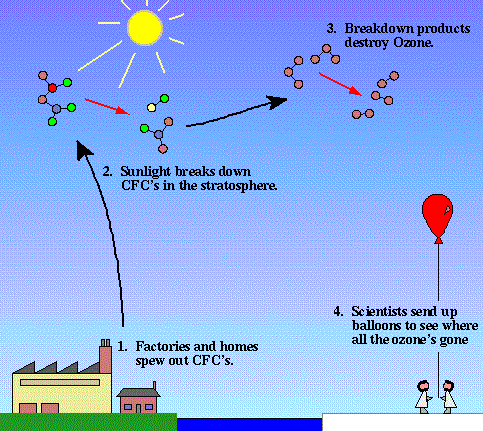
This is the life cycle of the CFCs; how they are transported up into the upper stratosphere/lower mesosphere, how sunlight breaks down the compounds and then how their breakdown products descend into the polar vortex.
How to Minimize or Reduce the Thinning of the Ozone Layer
Since CFC and plastics were already around us and would not leave our hands very soon, individuals need to think of some ways how to minimize the thinning of the Ozone layer. The ozone layer really needs the help of the living creatures which it protects from the harmful ultraviolet rays.
Imagine the effect of this on the ozone layer as well as on the Earth's surface many years from now if the ozone will be completely destroyed. But we will not go to that time. We must really be conscious to avoid more serious problems in the environment. We are now experiencing the effects of this depletion and many people already died because of that.
We have to contribute a fair share to our Ozone layer to minimize its thinning and bear simple rules before buying or burning certain things that may speed up the thinning process.
I am aware that my everyday actions contribute to the decline and depletion of the Ozone layer and I am guilty of its effects to our environment.
I have listed here very basic and simple ways on how we can reduce, if not totally repair our Ozone layer:
- Plant trees. Trees will produce more oxygen and absorb more carbon dioxide.
- Discourage the human activities that lead to forest extinction.
- Do not burn plastics and other non-biodegradable things. Recycle them in much possible ways.
- Try to use products which are labelled "Ozone-friendly".
- Start recycling programs in your area or in your home.
- Air conditioner in vehicles and on your homes should be checked regularly to avoid leaks.
- Minimize/reduce or much better, avoid the use of aerosols and sprays composed of CFCs.
- Replacing your halon fire extinguishers with alternatives like foam.
- Drive less, walk more.
- Conserve energy. Turn off lights and appliances when not in use and buy energy-saving lights and other gadgets.
- Always remember the 3R: Reuse-Reduce-Recycle.
The Industrial Revolution has done a great change on the life of the people. But however, we did not recognize the problem until it is too late. All we can do now is try to minimize and reduce the harmful gasses that enter the atmosphere and stratosphere of the Earth.
Every individual can really help change and save environment. It is just a matter of doing it all the time even if others do not. All of us can help protecting our Ozone layer even with those simple steps listed above. Before we point fingers to others to implement policies or rules, let us first begin to do something for the sake of saving our environment.
As Mahatma Ghandi said, "Be the change you wish to see in the world."
